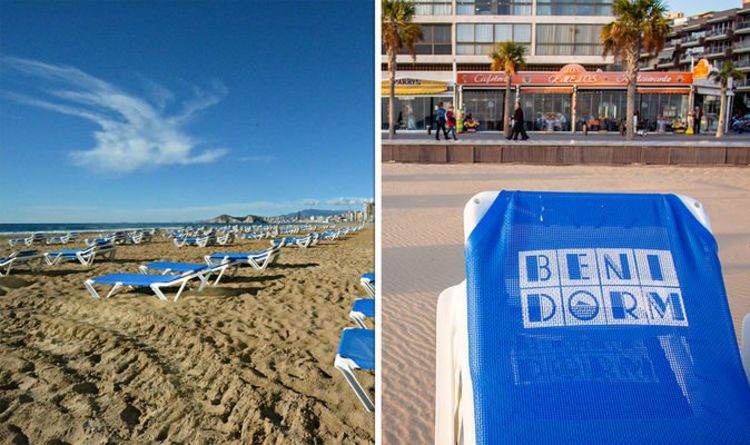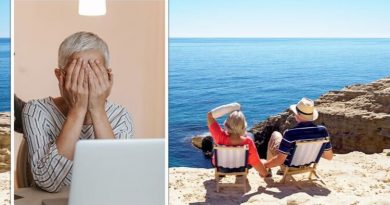‘Streets have emptied’ Benidorm hit by ‘second worst winter in history’ as hotels close
Benidorm is a 'ghost town' without UK tourists says bar owner
We use your sign-up to provide content in ways you’ve consented to and to improve our understanding of you. This may include adverts from us and 3rd parties based on our understanding. You can unsubscribe at any time. More info
Following the national lockdown in Spain at the beginning of 2021, the hotels in Benidorm began to slowly reopen their doors. However, half of these hotels have had to close again this year as the Spanish town’s streets have been left empty after the Christmas period.
Benidorm is facing its second worst winter season “in the history of tourism”.
The situation is only marginally better than what it was at the beginning of last year, which was the Spanish resort’s worst winter.
Around 50 percent of the town’s hotels are closed since owners have complained of a “lack of work” due to the decrease in visitors.
Hoteliers have said they do not see the point of opening when there such few national and international tourists in the town.

The weeks following Christmas up until mid-February are always the quietest of the whole year for Benidorm, but 2022 has thus far been worse than usual.
A hotel spokesperson said: “Benidorm starts the year with close to 50 percent of the hotel establishments closed, a complicated situation that only exceeded the months of total closure that they had to carry out due to the restrictions of the pandemic.
“The wave of hotel closures and the lack of foreign or national travellers also affects bars and restaurants that have seen how the streets of the city emptied after the Christmas period.”
DON’T MISS:
‘Made me vomit’: British expat’s worst thing about life in the USA [INSIGHT]
Cyprus changes travel rules for UK tourists making travel easier [RESTRICTIONS]
Influencers detail how they afford to travel full time [EXPERT]
Álex Fratini, representative of the Abreca hotel association, added: “Many hotels have decided to ‘close the blinds’, either to go on vacation, to make improvements and reforms in their premises or simply because ‘the lack of work’ does not make it profitable to open every day.”
According to Abreca data, among its almost 1,300 associates, 50 percent are currently closed because “it’s not worth it”.
Another hotel association, Hosbec, has also confirmed that Benidorm has seen its average occupancy rate drop over just one week by nearly 10 percentage points.
The average occupancy of the destination stands at 43.7 percent for the days between January 3 and January 9.

Hosbec’s president, Toni Mayor, said: “It is the second worst winter in the history of tourism after 2021, when everything was closed due to the pandemic.”
Of the tourists holidaying in Benidorm this week, 44.3 percent of them are national, while the rest are international.
British tourists are the most popular international group, accounting for 34.2 percent of the total occupancy quota.
Mr Mayor continued: “The presence of 34 percent of Brits in Benidorm when the restrictions had not yet been lifted is striking.”

The town’s hoteliers are hoping the tourism industry will return to normal at the end of February.
“The expectations are for a spring and summer without restrictions and with a normalised epidemiological situation,” Mr Mayor added.
Benidorm is not the only Spanish resort struggling to get going this winter.
Other resorts on the Costa Del Sol have struggled to attract tourists over the past few weeks.
The Benalmádena Costa, just south of Málaga has been described as a “ghost town” by some visitors due to closed hotels.
Andy and Sarah Moon, who holidayed in the resort during the winter season, said: “We’ve been coming here for years over the festive season, but this year we had trouble booking a hotel because the one we usually stay at is closed.
“However, the biggest disappointment is that the place is like a ghost town.
“Most of the bars are shut, and the ones that are open have nobody in them.”
Additional reporting by Rita Sobot.
Source: Read Full Article



